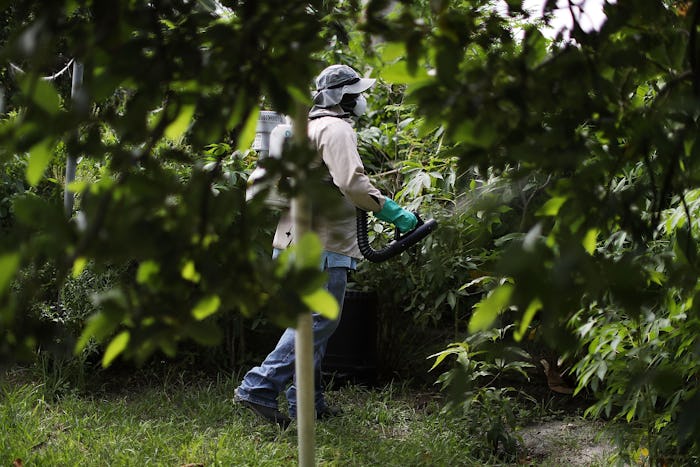Life

Where In The US Is Zika? This Map Is Super Helpful
Zika, the virus transmitted primarily by the Aedes aegypti mosquitos (though the Aedes albopictus can also transmit Zika), wreaked havoc through many parts of the world in 2016. Countries in South and Central America, the Caribbean, and even areas of the United States saw outbreaks throughout the better part of last summer. Now that summer has officially arrived again, many are wondering where Zika can be found in the U.S. this year.
The infectious disease, which frequently passed through healthy adults with few or no symptoms, was of particular concern for pregnant women or women who hoped to become pregnant. While Zika is primarily passed through the blood stream from the bite of an infected mosquito, it can also be sexually transmitted. The Zika virus, if passed from a pregnant woman to her unborn baby, could cause congenital birth defects. According to the Centers for Disease Control and Prevention, these birth defects include:
- Severe microcephaly in which the skull has partially collapsed
- Decreased brain tissue with a specific pattern of brain damage, including subcortical calcifications
- Damage to the back of the eye, including macular scarring and focal pigmentary retinal mottling
- Congenital contractures, such as clubfoot or arthrogryposis
- Hypertonia restricting body movement soon after birth
Last year, one out of every 10 pregnant women with Zika gave birth to a baby with Zika-related birth defects. The CDC reported that the Zika infection has been linked to other congenital abnormalities, such as brain atrophy and asymmetry, tremors, seizures, and brain stem dysfunction. There is currently no vaccine for Zika.
Since the beginning of 2017, the CDC reported 143 newly contracted, non-congenital cases of Zika within the United States. While some Aedes aegypti (or Yellow Fever mosquito) eggs were reportedly recently spotted in Pasadena, California, there have been no new reported cases of Zika in the area. The mosquito eggs were also reportedly spotted in Long Beach, California. According to the CDC, the four states in the U.S. with the highest number of Zika cases are:
- California
- Florida
- New York
- Texas
Outside of the domestic U.S., Puerto Rico has seen by far the most cases of Zika; as of June 2017, 473 people in Puerto Rico have contracted the virus. There remains a travel advisory for people hoping to visit the area.
The most important thing to consider as we move into summer is to take precautionary measures to avoid mosquito bites. Avoid standing water like swimming pools and ponds, use an insect repellent with DEET, wear light-colored, long-sleeved clothing, and make sure there are no holes in screen doors or window screens.
Because summer is coming... and Zika is still around.